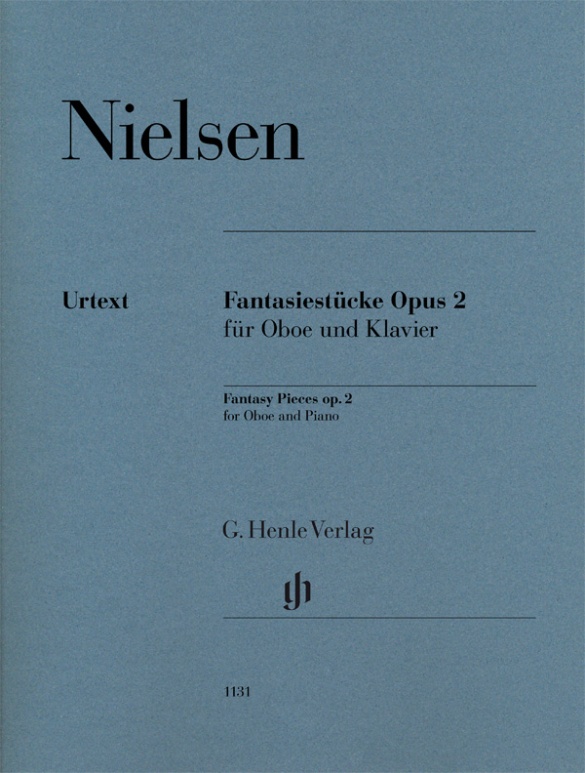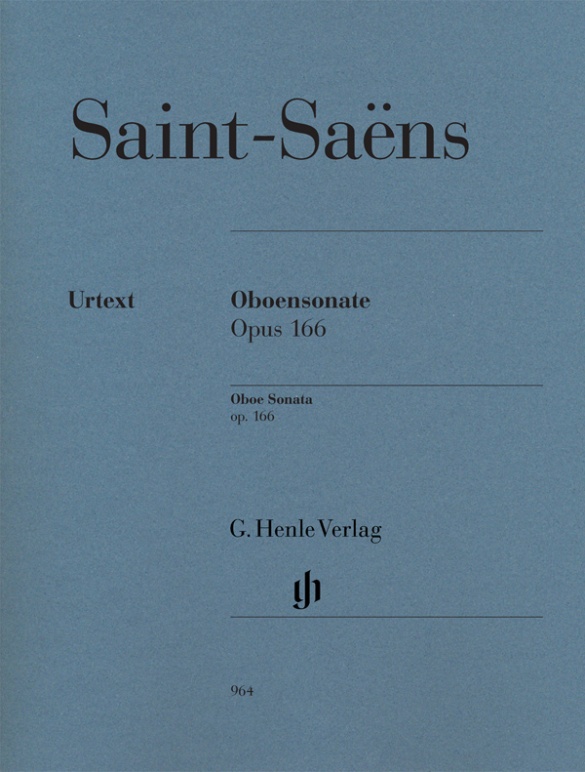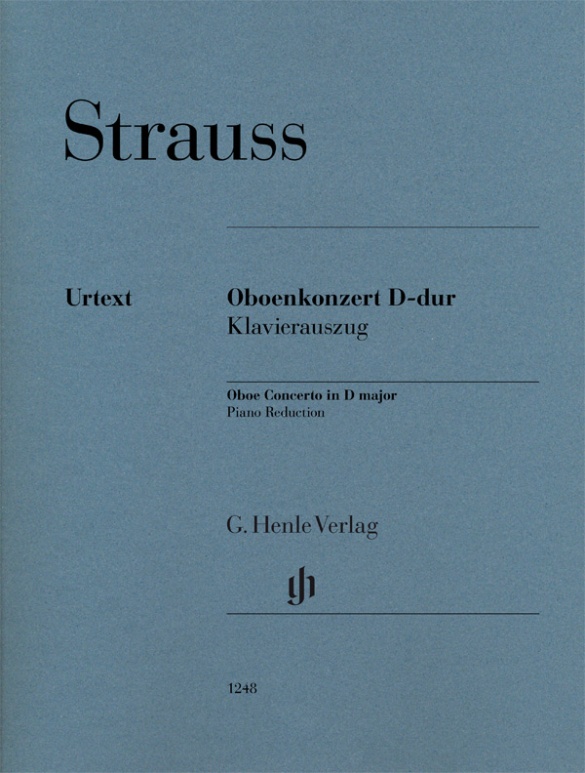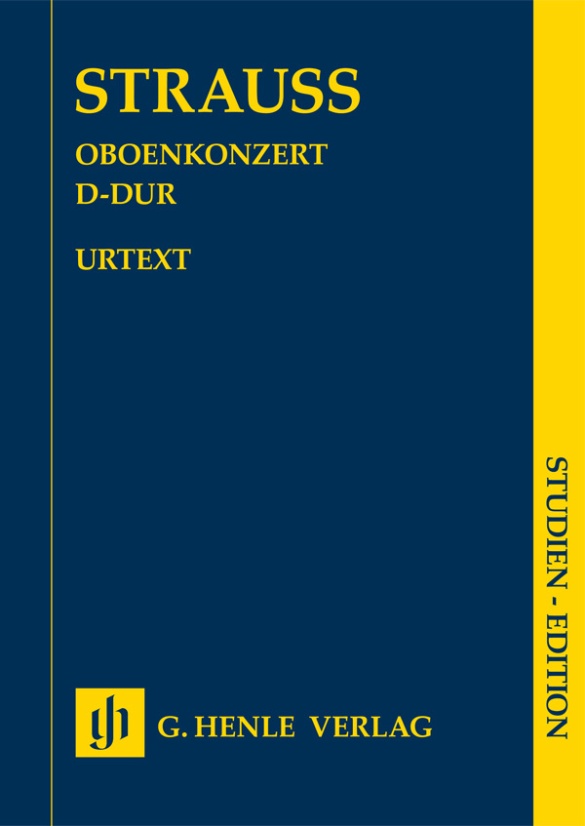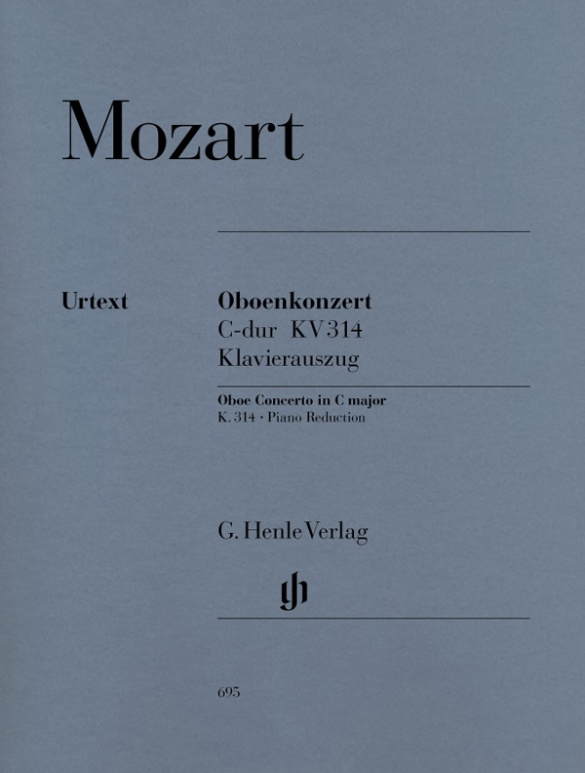

Wolfgang Amadeus Mozart
Oboe Concerto C major K. 314
This Henle Urtext edition in unrivalled in layout and precision. The professional journal “Rohrblatt” wrote shortly after its publication (in 2004): “An editorial stroke of genius … Every oboist who attempts this concerto must have his interpretation measured against this edition.” Such praise principally honors the editor, the famous oboist Ingo Goritzki. It was his idea to offer a supplement to the edited instrumental part that presents both sources of the work – each problematic in various ways – together with the edited part. Owing to this chosen arrangement of the score one can see all variants at a glance, and make one’s own justified performance decisions. Particularly problematic and oft-debated passages are discussed in detail by Professor Goritzki. The above-cited praise for “an editorial stroke of genius” also applies to Mozart expert and pianist Robert Levin, who has composed idiosyncratic cadenzas in the master’s style especially for Henle’s edition of Mozart’s oboe concerto; very much in the improvisatory spirit of a cadenza, one can jump from one place to another in the template thanks to a simple (numerical) cross-reference system, and thus craft one’s “own” cadenzas. Finally, a word about the much-praised piano reduction for this edition, which comes from Mozart expert and renowned continuo specialist Siegfried Petrenz. He aims for a well-sounding and not too technically-challenging keyboard part that is clearly removed from those often-found piano reductions that orient themselves around an orchestral scoring. In so doing, he also takes account of the typical instructional situation in which a professional accompanist is not always available to the oboist.
Content/Details
About the Composer

Wolfgang Amadeus Mozart
Mozart is one of the few composers to have produced masterpieces in all genres. On the concert tours he undertook in his early years (London, Mannheim, Italy, Paris) he gained many varied musical impressions that he assimilated in his youth and which formed the prerequisite for his later consummate musical language.
| 1756 | Born in Salzburg on January 27, the son of musician and later court composer Leopold Mozart. His early regimented musical education from his father began in 1761, first compositions at age five. |
| 1763–66 | Extended concert tours through various German cities and to Paris, London, Amsterdam, Switzerland. He composes his first sonatas for violin and piano, K. 10–15, dedicated to Queen Charlotte, as well as the first symphonies from London, K. 16 and 19, which show the influence of the works of Johann Christian Bach and Karl Friedrich Abel (the three-movement Italian sinfonia form). |
| 1767 | Premiere in Salzburg of the sacred light opera “Die Schuldigkeit des ersten Gebotes,” K. 35 (written with Michael Haydn and Anton C. Adlgasser), and the intermezzo “Apollo et Hyacinthus,” K. 38. Journeys with his father and sister to Vienna. |
| 1768 | Probably the premiere in Vienna of his Singspiel “Bastien and Bastienne,” K. 50. Composition of his first masses. |
| 1769 | Performance in Salzburg of the dramma giocoso “La finta semplice,” K. 51. |
| 1769–71 | Two tours to Italy; he meets Farinelli, P. Nardini, and Padre Martini, among others, and, on the second trip, Hasse. Premieres in Milan of his opera seria “Mitridate, Re di Ponto” in 1770 and of the festa teatrale “Ascanio in Alba” in 1771. Composition of symphonies and his first string quartet (1770, K. 80). |
| 1771 | Composition of the oratorio “La Betulia liberate,” K. 118, in Salzburg/Italy. |
| 1772 | Premiere of the serenata drammatica “Il sogno di Scipione,” K. 126, for the accession of Salzburg Archbishop Hieronymus Count Colloredo. He receives an appointment as salaried concertmaster of the Salzburg Court Chapel (of which he had been an unpaid member since 1769). Third journey to Italy with his father, premiere in Milan of the dramma per musica “Lucio Silla,” with general success. The final trip to Italy spells the ends of his youthful phase of appropriation; he has tested out all important instrumental genres (symphony, sonata, string quartet) and all the main genres of opera (Singspiel, opera buffa, opera seria, festa teatrale). |
| from 1773 | Composition of string quartets (K. 168–173) under the influence of Haydn, and of symphonies, divertimenti, serenades. He increasingly devotes himself, contingent upon the duties of his post, to liturgical music; several masses are written. Begins to compose violin and piano concerti. |
| 1775 | Premiere in Munich of the dramma giocoso “La finta giardiniera” and the serenata “Il Rè pastore.” Piano sonatas, K. 279–284. |
| 1777 | He vacates his post temporarily to undertaken a promotional tour with his mother to Munich, Mannheim, and Paris. |
| 1778 | Composition of the “Paris” Symphony in D major (K. 297). In Paris he experiences the quarrel between the proponents of Gluck and those of Piccinni. Publication of violin sonatas. |
| 1779 | Resumes his duties in Salzburg, as court organist. Coronation Mass in C major. |
| 1781 | Premiere in Munich of his tragédie lyrique “Idomeneo,” in which French and Italian elements are synthesized. Journey to Vienna. After his falling out with the Archbishop of Salzburg, he gives up his post, moves to Vienna, and earns his living as a free composer through concertizing and giving music lessons. His last great period of creativity begins. |
| 1782 | He becomes acquainted with the works of Bach and Handel through Baron van Swieten; after this he arranges Bachian fugues and incorporates the “learned style” (fugues and counterpoint) into his works beside the “galant style” (e.g. in the String Quartet in G major, K. 387, in 1782; Piano Sonata in F major, K. 533, in 1786; the Jupiter Symphony, K. 551, in 1788; “Die Zauberflöte” (“The Magic Flute”), and the Requiem in D minor, K. 626, both in 1791). Premiere in Vienna of his Singspiel “Die Entführung aus dem Serail” (“The Abduction from the Seraglio”). Composition of the Haffner Symphony in D major, K. 385. |
| 1783 | Mass in C minor, K. 427; Linz Symphony in C major, K. 425. |
| 1784 | Hunt Quartet in B-flat major, K. 458. |
| 1785 | Premiere in Vienna of the oratorio “Davide penitente,” K. 469. “Dissonance” Quartet in C major, K. 465. |
| 1786 | Premiere of the comedy with music “Der Schauspieldirektor” (“The Impresario”), K. 486, which Salieri’s competing work “Prima la musica e poi le parole” (“First the Music and Then the Words”) bests. Premiere in Vienna of the opera buffa “Le nozze di Figaro” (“The Marriage of Figaro”), whose extended action-packed finales form a highpoint of opera buffa. Prague Symphony in D major, K. 504. |
| 1787 | Serenade in G major (“Eine kleine Nachtmusik”), K. 525. He is named imperial and royal chamber composer. Premiere in Prague of the dramma giocoso “Il dissoluto punito ossia Il Don Giovanni,” a synthesis of serious and comic opera. |
| 1788 | Composition of the large Symphonies in E-flat major, K. 543; G minor, K. 550; and C major (Jupiter Symphony), K. 551. Clarinet Quintet in A major, K. 581. |
| 1790 | Premiere in Vienna of the dramma giocoso “Così fan tutte ossia La scuola degli amanti.” |
| 1791 | Premiere in Prague of the opera seria “La clemenza di Tito” and in Vienna of the Singspiel “Die Zauberflöte.” Clarinet Concerto in A major, K. 622. The Requiem remains unfinished. Dies in Vienna on December 5. |
About the Authors
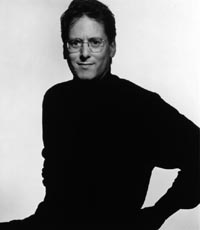
Robert D. Levin (Cadenzas)
Product Safety Informations (GPSR)

G. Henle Verlag
Here you can find the information about the manufacturer of the product.G. Henle Verlag e.K.
Forstenrieder Allee 122
81476 München
Germany
info@henle.de
www.henle.com
Meine Aufgabe ist ..., die Neuausgabe zu beurteilen. Sie entspricht besten Traditionen von Urtext und Henle. Der Klavierauszug von Siegfried Petrenz ist ausgezeichnet. Er liegt gut in der Hand und verbessert zudem vieles, was die alten Ausgaben halt so mit sich herumschleppen und voneinander abschreiben. Bravo! ... Nun aber zu Goritzki selbst: Sein editorischer Geniestreich ist, daß er drei Solostimmen (praktischerweise alle in C-Dur) übereinanderdruckt: Oboe (Abschrift Salzburg), Flöte (Abschrift Wien) und Goritzki (er nennt das "Spielstimme Oboe"). Das ist nun wirklich ein Geschenk für neugierige und urtextinteressierte Oboisten ... Jeder Oboist, der sich an dieses Konzert traut, muß seine Interpretation an dieser Ausgabe messen lassen.
Rohrblatt, 2004Mozart wrote only one concerto for oboe. ... The current edition includes a detailed history of the work and its confusion with the D major flute concerto.
Sheet MusicVon Wolfgang Amadeus Mozarts Oboenkonzert C-dur KV 314 publiziert Henle einen Klavierauszug (HN 695) mit Kadenzen von R. Levin. Der Herausgeber dieser Edition ist wohl der intimste Kenner der komplexen Überlieferungs- und Quellensituation dieses absoluten Meisterwerks für Oboe: Ingo Goritzki kommt durch seine fundamental neue Quellenbewertung zu zahlreichen Textverbesserungen gegenüber bisherigen Ausgaben.
Pizzicato... Goritzkis Edition bringt uns einen grossen Schritt vorwärts, ... . Nun erscheint eine neue Urtext-Ausgabe, diesmal beim Henle-Verlag. Der bekannte Oboist Ingo Goritzki hat sie mit grosser Akribie betreut. ... eine sorgfältige Rekonstruktion des wahrscheinlich ursprünglichen Textes. Diese ausserordentlich gründlich aufbereitete Edition enthält ausser der Oboenstimme und dem Klavierauszug (von Siegfried Petrenz) ein zusätzliches Beiheft. Darin werden alle drei Stimmen dargestellt: 1. Oboe, Abschrift Salzburg, 2. Flöte, Wiener Abschrift, nach C transponiert, 3. rekonstruierte Spielstimme Oboe. Dazu gibt Goritzki, der früher auch Flöte geblasen hat, in einem Vorwort Erläuterungen über die Stimmführung und begründet seine Vorschläge aus dem harmonischen Kontext. Auch werden andere Werke Mozarts zum Vergleich hinzugezogen. ... Goritzkis Edition bringt uns einen grossen Schritt vorwärts, ... Für diese Ausgabe hat Robert D. Levin für jeden Satz mehrere Kadenzen zur Auswahl entworfen. Sie sind zum Teil auch untereinander zu kombinieren und halten sich, bei aller Virtuosität, am Stil Mozarts, auch was den Ambitus der Oboe anbelangt.
Schweizer Musikzeitung... das ist der große Vorteil dieser Ausgabe, neben dem Klavierauszug und der Oboenstimme gibt es ein Beiheft, das in Partiturform die Salzburger Oboenstimme der Wiener Flötenstimme (nach C-Dur transponiert) gegenüberstellt und in einer dritten Zeile Goritzkis Ergebnis der Zusammenführung zeigt. .. Der Oboenstimme sind, was auch nicht bei allen Ausgaben üblich ist, Vorschläge für die Kadenzen und Eingänge der drei Sätze beigegeben, verfasst von Mozartspezialist Robert D. Levin. Und diese Kadenzen sind etwas Besonderes, da es sich um eine Art Kadenzbaukasten handelt. Für jeden Satz bietet er zwei Kadenzen an, die aber gekennzeichnete "Sollbruchstellen" haben, an denen man zwischen einzelnen Kadenzteilen oder auch zwischen beiden Kadenzen hin und her springen kann. Natürlich inspiriert dies auch dazu, eigene Teile einzufügen. Ingo Goritzkis Neuausgabe von Mozarts Oboenkonzert ist eine wichtige Neuerscheinung, und selbst wenn man bei seiner gewohnten Fassung (oder Ausgabe) bleibt, sollte man einen Blick in "Henles Urtext" wagen.
Oboe & Fagott... Die aufwändige – und sehr preiswerte – Ausgabe aus dem Münchner Henle-Verlag besteht aus Klavierauszug, Oboenstimme mit Kadenzen sowie einem Beiheft, in dem Gortzki drei Versionen zum Vergleich in drei Systemen untereinander setzt:
Tibiarecommendations
autogenerated_cross_selling
Further editions of this title
Further editions of this title


